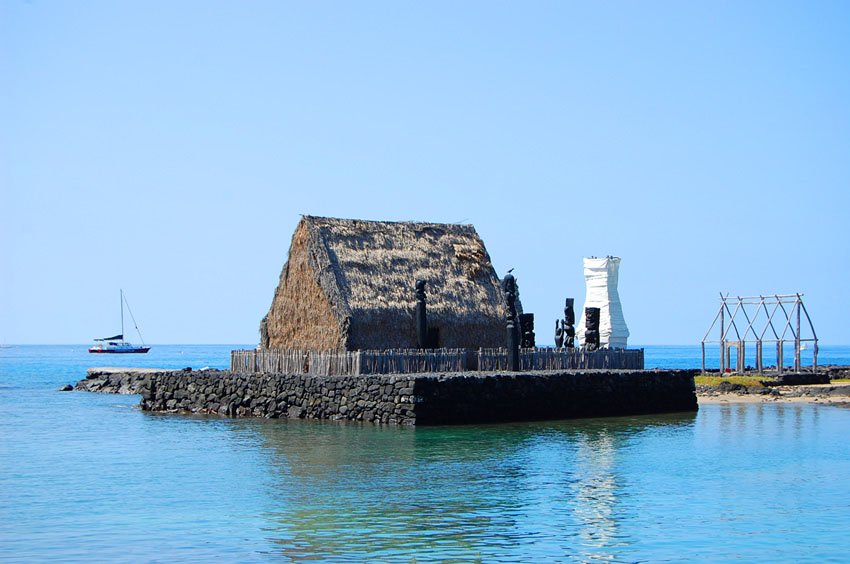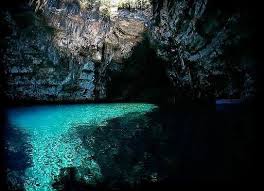The Interstate 25 corridor through New Mexico, Colorado, and Wyoming is often nicknamed America's Nuclear Highway. Within 100 miles of that Interstate on either side of the highway are situated many of the United State's most strategically significant nuclear defense installations.
As the 70th anniversary of the Hiroshima and Nagasaki bombings have passed with numerous media articles and segments presented, the controversy surrounding the decision to deploy the bombs against Japan is as vibrant as ever. In New Mexico, the National Laboratories entrusted with the maintenance and development of nuclear weapons are alive and thriving. The discussions about dealing with the toxic cores of obsolete missles and bombs, and the proposed replacement of the old designs with new and more deadly weapons at an estimated cost of over $1,000,000,000,000 (trillion) dollars boggles the mind.
The Atomic Age began in New Mexico. The test of the plutonium core of the Trinity Site bomb was a leap into the most complicated and dangerous period in world history. Los Alamos, one of two New Mexico cities I call my hometown, is the site where the research designs of the Hiroshima and Nagasaki bombs were done. In the case of the plutonium bomb, Los Alamos National Laboratory also tested the bomb before it was dropped on Nagasaki. The National Laboratory system, which includes numerous scientific research labs, has two National Laboratories in New Mexico, Los Alamos and Sandia Laboratory, located in Albuquerque.
My father came to wartime Los Alamos in 1944. He worked for nearly 32 years at Los Alamos, retiring in 1975. My half-sister graduated from the high school in Los Alamos in 1949, with me graduating in 1971 and my younger sister in 1975.
To help explain Los Alamos as a community, it is good to cite a few statistics. Los Alamos has the highest percentage of Ph.D graduates in the United States, the highest county per capita income of any county in the USA, and was selected as the most desirable small community in the USA by a national publication this year.
My first seven years of schooling took place in the Rio Grande Valley below Los Alamos in a small city called Espanola. The Espanola Valley is a beautiful valley situated between two major mountainous canyon systems along the river. The Valley, as it is called by people who live there, is roughly 85% Indigenous Pueblo people and Hispanic, and 15% Caucasian. In Los Alamos, the percentages are roughly the opposite, 85% Caucasian and 15% Hispanic and Indigenous people. Los Alamos is a relatively new community, begun in 1943, although ancient Anasazi occupation dates back to pre-Columbian times. In the Espanola Valley, Pueblo tribes have been present for at least 1200 years, and Hispanic people came in 1598.
The contrast between the Espanola Valley and Los Alamos County is so different that it is impossible to understate. What makes Los Alamos different than almost any community in the United States is the manner in which people live there. The higher percentage of Ph.D.s in town makes for unusual expectations with respect to primary and secondary schools, as well as the sheer number of different organizations reflecting the interest of residents. The expectations parents have is that their kids will get into the best colleges, and follow their dreams. At a time when parents across the USA are shuddering at the cost of higher education for their children, Los Alamos families retain a strong faith in the value of higher education.
The families in Los Alamos and Espanola are also different in daily life. Many Espanola Valley residents have been on the land their family owns for centuries, especially the Pueblo peoples. The economic impact of the Los Alamos National Laboratory on the Valley is dramatic. There is an impact that the Laboratory makes by purchasing numerous goods and services from the Valley and other towns in a 100 mile radius from Los Alamos.
The Pueblo peoples and the Laboratory also have a high level of secrecy in common. Pueblo peoples guard their ancient beliefs from a prying world due to attempted interference from the Christian church in the long history of Hispanic/American/Pueblo conflict over traditional Indigenous religion and missionary work that several Christian sects have introduced over the centuries. Los Alamos families do not discuss what mom or dad did at the Laboratory today over dinner due to the high levels of National Security that most of the Los Alamos staff have to observe. This secrecy is especially prevalent in new weapons design and testing. If friends ask what your mom or dad do at the Lab, it is common for most kids to say that their parent works at a particular Tech Site in the numerous canyons and mesa tops that make up the Lab.
Recently I watched a miniseries called Hiroshima. It covers the events leading up to the Hiroshima bombing on August 6, 1945. The three hour film, which appeared to be produced by the Hallmark Channel. The film used archival film from World War 2 along with new footage with actors portraying various leaders and other people important in the story.
The story of Los Alamos is intimately and permanently linked with the fear that someone or something will invade and take over the USA. We as a country have lived in fear of potential enemies since the "day that lived in infamy," to paraphrase President Roosevelt after Pearl Harbor. Since that attack, our country has lived in fear of it repeating. When it did on September 11, 2001, those people who died, became not only martyrs, but a reason for more protective armament to keep out foreign threats.
It is difficult to overstate the fear that pervades today's world, and we appear as a country to believe that the size of our military forces increases the level of safety our society has. In a state as impoverished as New Mexico, the billions of dollars that Los Alamos and Sandia National Laboratories bring to the state are crucial to its financial health and employment of New Mexicans statewide. That the sheer number of businesses related to defense related work is crucial to New Mexico's economy is not surprising. Throughout the West, the Representatives and Senators from Western states actively seek new contracts from the United States Departments of Energy and Defense. We are dependent on those dollars.
My parents were conservative Republicans when they came to Los Alamos. This was the way both sides of our family had been affiliated for generations. Naturally, when the time came to register to vote, I did what I thought was the right thing to do, and became a Republican. It was a comfortable association that pleased my parents, my adult friends, and most of my friends in high school. After graduating from Los Alamos High School, I decided that of the five colleges I had applied to, I would matriculate to Colorado College in Colorado Springs, Colorado. It was and is still a college dedicated to liberal arts, and then had a new way of holding classes called The Block Plan, which reduced a semester long class into a month long form which a student took, eliminating the traditional form of learning by taking several semester long courses simultaneously.
The Vietnam War was in full force, and veterans were coming to Colorado Springs, trying to readjust to life. They often wandered onto the Colorado College campus, often high or intoxicated. It would have been easy to condemn them, but I took time to talk with them, often over beers or cheap wine. The men I encountered were from a variety of backgrounds. They had been drafted, and then were assigned to various locations in Vietnam. They generally were non commissioned troops. I listened to them relate their stories while serving in Vietnam, being careful to not be judgemental. As time passed, their inhibition would leave them, and the horror of that war would descend upon these young men. The stories they related were only shared when inebriated or high on some other mood altering substance. These men were not cheered for when they came home. They were verbally condemned.
The experiences I was fortunate to be able to hear from these guys, and the insanity of the entire Vietnam War as a whole, profoundly changed my political views and my faith in a Higher Power as well. I was able to read the New Testament, especially the four gospels, and nonviolent literature from a variety of people and eras. The whole period of study, which lasted about two years, showed me that war was always futile. I became a conscientious objector, and served two years in a hospital after graduation.
I became persuaded that the use of war as a means to solve disputes between sovereign nations was wrong, on both a spiritual and a humanitarian basis. The Jesus that I loved told his followers to turn the other cheek. The writings of Leo Tolstoy, Mohandas Gandhi Martin Luther King, and so many others, in my mind showed that me that wars against Vietnam, Iraq, Afghanistan, Spain, and Mexico were either designed to gain territory or to enrich stockholders in American countries. Coups authored in Iran, Chile, and so many more countries were proof to me that the country I loved as a young Republican had an extraordinary dark side to it.
The fact that my immediate family had participated in the making of a weapon so heinous that it could bring about the decimation of humanity and other species as well shook me to my foundation. This realization early in my nonviolent approach to resolving conflicts in turn had an effect upon my view of Los Alamos.
I read everything I could find that had been published on the bombings of Hiroshima and Nagasaki and the decision making process that led to the deployment and detonation of these bombs. What became apparent to me as I progressed in my literature review of both sides of the question as to whether these bombs should have been dropped made me feel conflicted. I had grown up with my family knowing scientists who were instrumental in the building of the first atomic bombs and subsequent "new and improved" atomic weapons in the decades after the first atomic bombs were dropped. It began to be irrational when the hydrogen bombs were built by the USA and USSR. Then, bombs were put on ICBMs and submarines. The world was almost destroyed in 1962, were it not for the extraordinary common sense of a Soviet submariner. The irrationality of our public servants who fund the building of and support the deployment of bombs that kill people but left buildings intact had reached new level of insanity. Who,pray tell, was going to use these buildings when the radiation therein would not allow people to be near them?
Then came Three Mile Island and Chernobyl, and ultimately Fukushima. The whole nuclear proposition began to stink like rancid fish. I became familiar with Los Alamos scientists who were part of the World War 2 scientists who later became avid and vocal opponents of nuclear weapons. Men like Robert Wilson, Richard Feynman, and Andrei Sakharov. What these men had in common was the strong conviction that nuclear weapons would be the means of the human race destroying itself.
I read probably 75 books and another 100 papers on the subject of the strategic use of nuclear weapons, their history, the ethical arguments against and for their existence, and the personalities of prominent scientists who were instrumental in the creation and dramatic increase in power of their destructive capability.
I came to the conclusion that the laboratories in the American West that build this most deadly of weapons have become an economic necessity for many of the regions in which they are located. To close these labs would devastate the economic stability of their surrounding communities. This is the rationale that begs the ethical issues that such powerful defensive (and offensive) weapons bring forth. Our elected officials, executive, legislative, and even judicial, have to grapple with the question that they have to confront, which is "why should we support the downsizing or closing of such facilities in the Western USA, when other parts of the country thrive on them?"
This is how the armed forces in the USA and other nuclear capable nations have perpetuated the nuclear and defense industries. For the Western USA, these facilities are thought to be irreplaceable. It is mind boggling to even count the number of installations in the West. In New Mexico alone, there are the Los Alamos, Sandia, and Manzano labs, the White Sands Missle Range, and the nuclear waste disposal facility near Carlsbad. California has Lawrence Berkeley and Livermore labs, Edwards Air Force Base, and the Jet Propulsion lab. Nuclear missles are a reality in Montana, Wyoming, and many other Western states. Even Hawaii and Alaska are home to defense sites involving nuclear weapons. The Las Vegas area has the site now known as Nellis Air Force Base, with Area 51 and the area once known as The Nevada Test Site.
The thing that makes this nuclear reality so unstable is that we now have knee jerk Republican Tea Partiers with apocalyptic fervor in both houses of Congress who would welcome a nuclear war, expecting Jesus of Nazareth to come riding in from heaven on a white horse wearing a cowboy hat and making war on the unbelievers. None of them have ever experienced the power of a 50 kiloton bomb from thirty miles like my dad did. I hope that nations around the world consider the implications of an all out exchange of nuclear missiles. The prevailing opinion is that such an exchange is unlikely to occur. With the rise of fundamentalists in Islam, Judaism, and Christianity, the world is far closer to destruction than any time since the Cold War. My dad's boss once removed has this quotation attributed to him after a U.S. President visited Los Alamos to be briefed
The quote went something like this..."Maybe if we put these SOB politicians on a boat in their underwear 30 miles from a 50 kiloton hydrogen bomb explosion, they would get rid of these bombs or at least agree to dismantle them." You know, maybe he was onto something!
Copyright 2015 by Peter Reum - All rights reserved







































